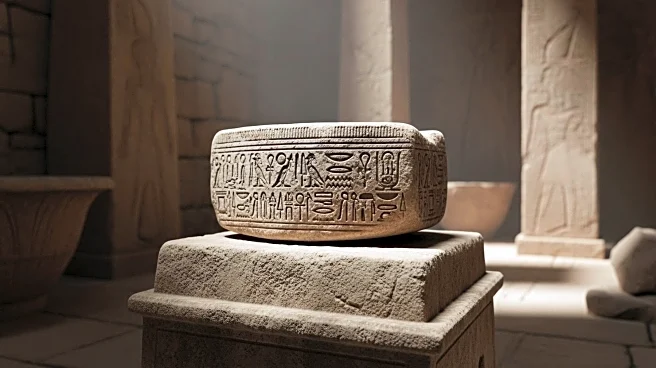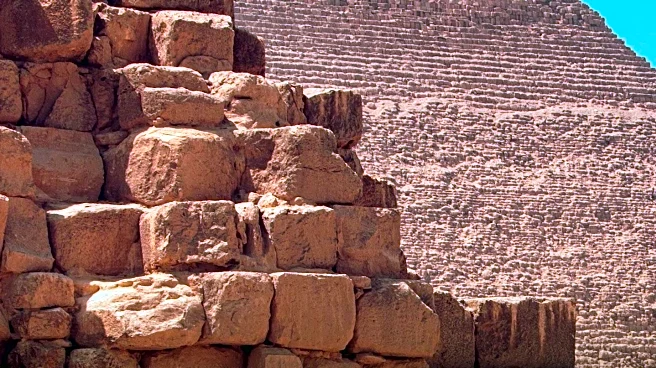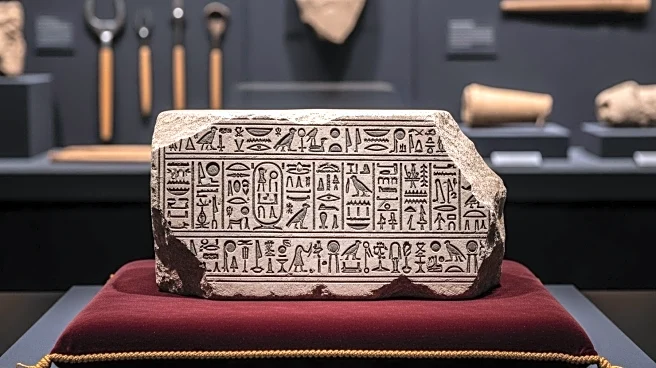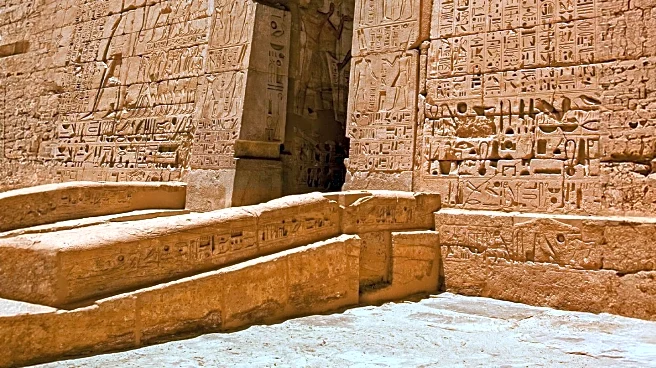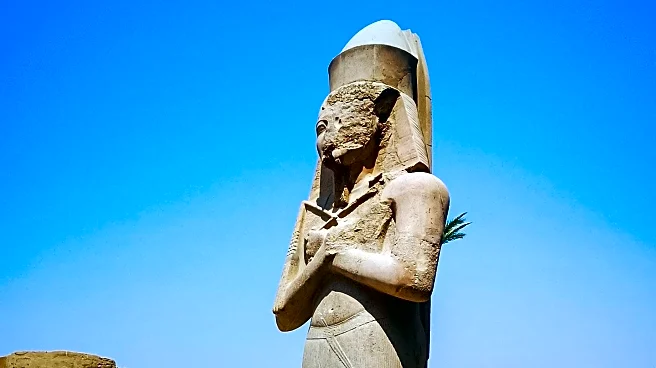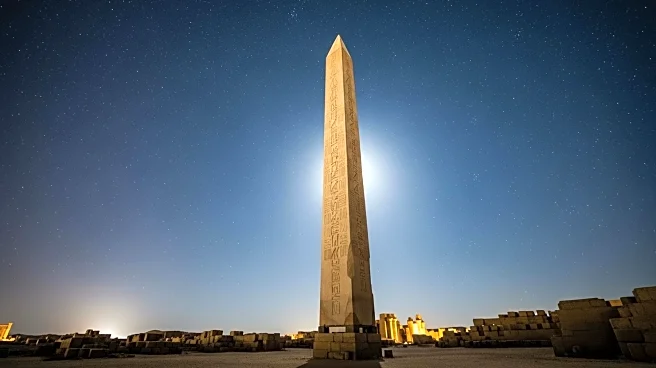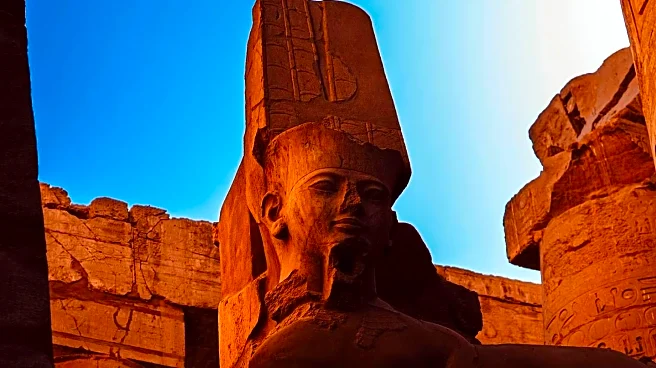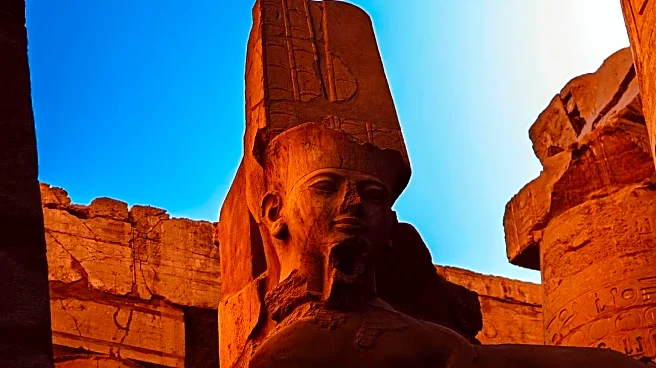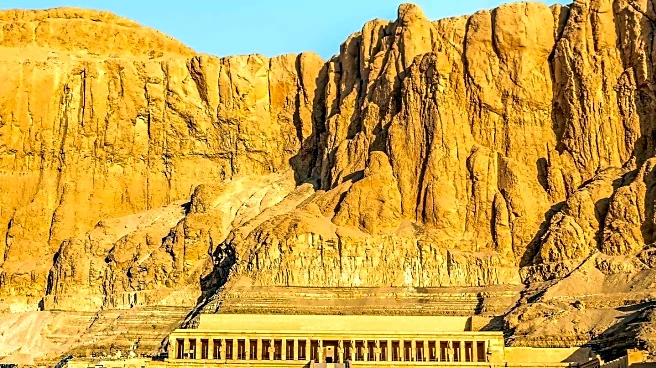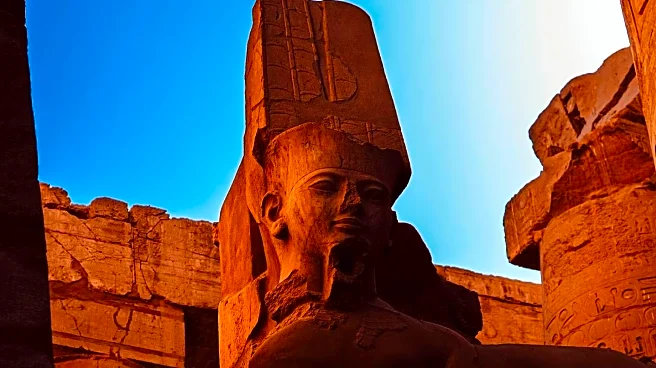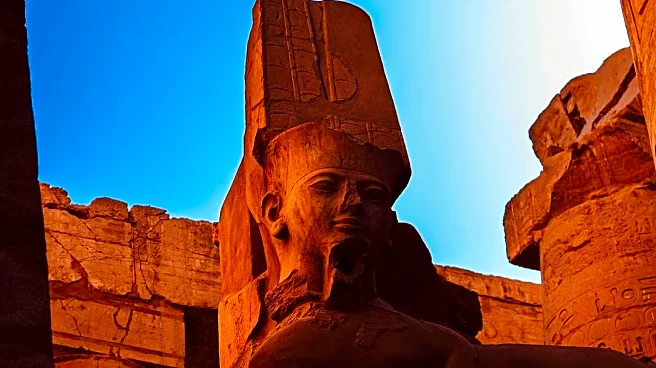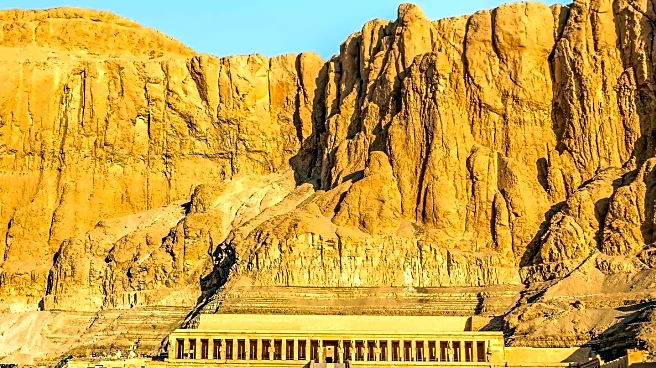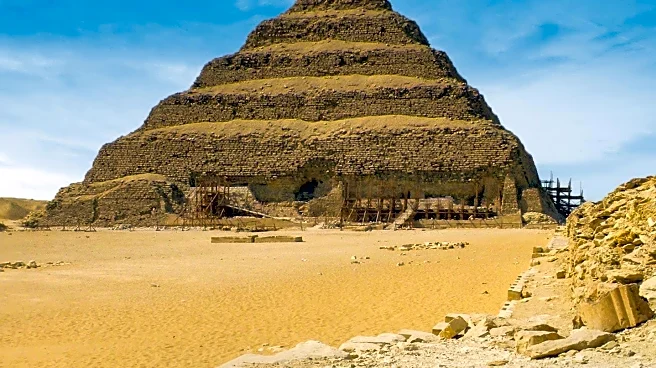What is the story about?
What's Happening?
Recent research has unveiled new insights into the ancient Karnak Temple in Luxor, Egypt, highlighting its evolution from a small island to a monumental complex. Published in Antiquity by an international research team, the study explores the interplay between the temple's physical surroundings and its religious significance. The research reveals how the Nile River's changing channels influenced the temple's development, creating an island of high ground ideal for early construction. This foundation supported one of Egypt's most important religious sites. The study also uncovers evidence of how Ancient Egyptians modified their environment, shaping the river to provide new land for building. The findings suggest a connection between the temple's location and Egyptian mythology, where a primeval mound rose from the waters of chaos, mirroring the landscape around Karnak Temple.
Why It's Important?
The research provides unprecedented detail on the evolution of Karnak Temple, offering a new perspective on one of the most iconic sites in the ancient world. By linking the temple's development to Egyptian mythology and landscape changes, the study enhances our understanding of the cultural and religious significance of Karnak Temple. The findings highlight the intricate relationship between the landscape, the construction of the temple, and the religious beliefs that shaped it. This research not only contributes to the historical knowledge of Ancient Egypt but also underscores the importance of environmental factors in the development of religious sites. The study's insights into the active role of the landscape in creating sacred spaces may influence future archaeological research and interpretations of ancient sites.
What's Next?
The study's findings may prompt further archaeological investigations into the relationship between landscape and religious sites in Ancient Egypt. Researchers may explore other temple complexes to identify similar connections between environmental factors and religious significance. Additionally, the study may inspire interdisciplinary collaborations between archaeologists, geologists, and historians to deepen the understanding of how natural landscapes influenced ancient civilizations. The insights gained from this research could also inform conservation efforts at Karnak Temple, ensuring the preservation of its historical and cultural heritage for future generations.
Beyond the Headlines
The research highlights the ethical considerations of modifying natural landscapes for religious purposes, as demonstrated by the Ancient Egyptians' actions at Karnak Temple. The study also raises questions about the long-term impact of such modifications on the environment and the sustainability of ancient construction practices. By examining the cultural and religious motivations behind these actions, researchers can gain a deeper understanding of the values and beliefs that shaped ancient societies. This knowledge may inform contemporary discussions on the balance between cultural heritage preservation and environmental conservation.
AI Generated Content
Do you find this article useful?
